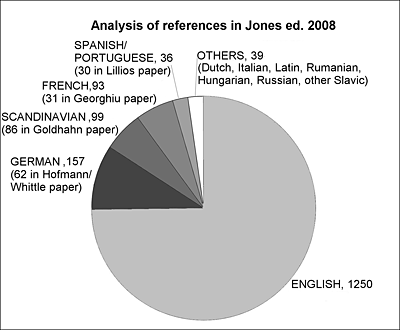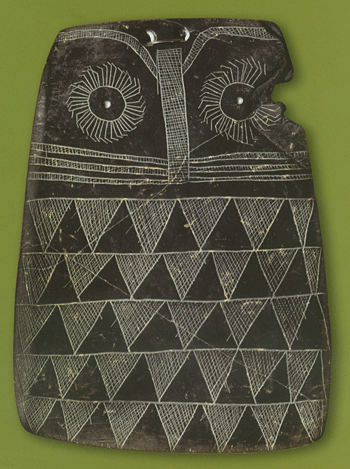Book Review

ANDREW JONES (ed.). Prehistoric Europe: theory and practice (Blackwell Studies in Global Archaeology 12). xvi+378 pages, 93 illustrations, 2 tables. 2008. Chichester: Wiley-Blackwell; 978-1-4051-2597-0 hardback £ 55; 978-1-4051-2596-3 paperback £ 19.99.
Review by Ian Ralston
School of History, Classics and Archaeology, University of Edinburgh, Scotland, UK (Email: Ian.Ralston@ed.ac.uk)
This series is '... designed to meet the needs of archaeology instructors and students [tackling] ...key regional and thematic areas of archaeological study' by producing accessible and 'useable teaching texts', which do not sacrifice theoretical sophistication. The volumes should 'immerse readers in fundamental archaeological ideas and concepts', but also 'illuminate more advanced concepts'... as well as exposing 'exciting contemporary developments in the field'. It is against this demanding schedule that these papers should be judged, the foregoing remarks suggesting senior undergraduates as the primary target readership.
Jones, as editor, intended to 'provide a flavour of the diversity of research in European prehistory' by commissioning sixteen authors to produce fourteen chapters (of c. 7-11 000 words; only two are not single-authored). Chapters are paired and preceded by an editorial introduction, as is the entire volume. Half the authors are UK-based, others comprising three US academics, one from Romania and two each from Sweden and Holland. The dominant perspectives fall within the broad church that is the post-processualist paradigm favoured around the North Sea and across the Atlantic, and from Jones' Introduction onwards (e.g. p. 11 'By the end of the 1970s, there was a growing dissatisfaction with the ... approaches of New Archaeology') our putative undergraduate could be excused for believing that preferred modes of archaeological explanation had evolved along the same trajectory everywhere on the European continent. It is surely further indicative of the book's thrust that all the literature cited in the editor's section introductions is in English and by British or North American academics.
That said, as an exposure of selected contemporary themes within the (mainly) post-processual archaeologies of Europe between the Mesolithic and the Late Iron Age (in Scandinavian terms), the volume contains much of merit. Britain and the Mediterranean Basin are (not entirely) excluded from this concept of prehistoric Europe, although treated in other series volumes. The geographical focus is predominantly on central and Balkan Europe west to southern Scandinavia and Holland, although individual contributions consider Iberian evidence (e.g. Lillios), or stretch east to the Urals (e.g. Hanks). Given the volume's selectivity, both thematic and geographical, the presence of Jones' guiding hand is generally helpful in steering readers through his commissioning design, and this, plus the fact that Prehistoric Europe is more fully illustrated than the companion volume on Britain (Pollard 2008), mean it is more accessible to the target readership. This is achieved not least because by making explicit the intentions and coverage, the lacunae are also clear.
The key themes are: frameworks for prehistory; place and landscape; the lifecycle of domestic architecture; the emergence of new technologies; archaeologies of death and memory; the archaeology of the body and the person; and exchange and communication. Each is considered by two authors, presenting different approaches for different periods. Writers vary in seniority from Professors emeriti to much younger researchers, and the scale of their contributions from the sub-regional to the sub-continental (e.g. Chapman and Wells on earlier and later prehistoric exchange, Collis on the Celts as 'grand narrative', or Pluciennik, more philosophically considering the hunter-gatherer to farmer transition). Some pairings work well as contrasting approaches, although inevitably certain themes are cross-cutting (e.g. the interpretation of burial monuments in landscapes) and in other cases the diversity of the two contributions (such as by Pluciennik and Collis) means the editor has to strain somewhat to demonstrate their relation. In terms of the intended readership, certain chapters were to my judgement particularly successful in their approach: Gerritsen revisiting domestic architecture in the Wohnstallhaus tradition; Hofmann and Whittle on Neolithic bodies; and the essays on new technological developments, with ceramics considered by Gheorghiu and metals by Ottaway and Roberts. The latter were amongst the most broad-scale essays, and were also underpinned by extensive (on average 160-item) bibliographies in a variety of languages, making plain that the fuller study of European archaeology requires consultation of a formidable range of literature. Hofmann and Whittle's chapter is one of only two where most sources were written in languages other than English, whereas in some chapters (in my view a matter for regret) over 90% of the literature cited is in English; over the entire volume it is 75% (see diagram).

Other chapters introduce sites and artefacts at a more localised scale: notably the two landscape studies (Fontijn on selective deposition of bronze work in watery contexts in Holland, and Goldhahn on four Scandinavian Early Bronze Age burial monuments); the later prehistoric 'twin' to Hofmann and Whittle by Back Danielsson on bodies in Early Historic Scandinavia; and Lillios' essay on Neolithic Iberia which opens the section on 'death, remembrance and the past'. As a set, these contributions by writers earlier in their careers usefully complement those discussed above, and collectively illustrate the potentials and limitations of post-processual approaches.
More forceful editing would have enhanced the accessibility of some of the contributions, and much fuller internal cross-referencing would also have helped - and not only our putative student. This volume can none the less be commended as a multi-period compendium of its particular strand of European prehistory - which might be termed Anglophone post-processualism. Students of the subject, their appetite whetted by this introduction, should, however, be encouraged also to search the sophisticated literature produced within other European archaeological communities.
Reference
- POLLARD, J. (ed.). 2008. Prehistoric Britain. Oxford & Malden (MA): Blackwell.




